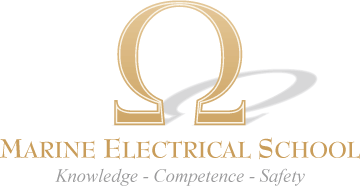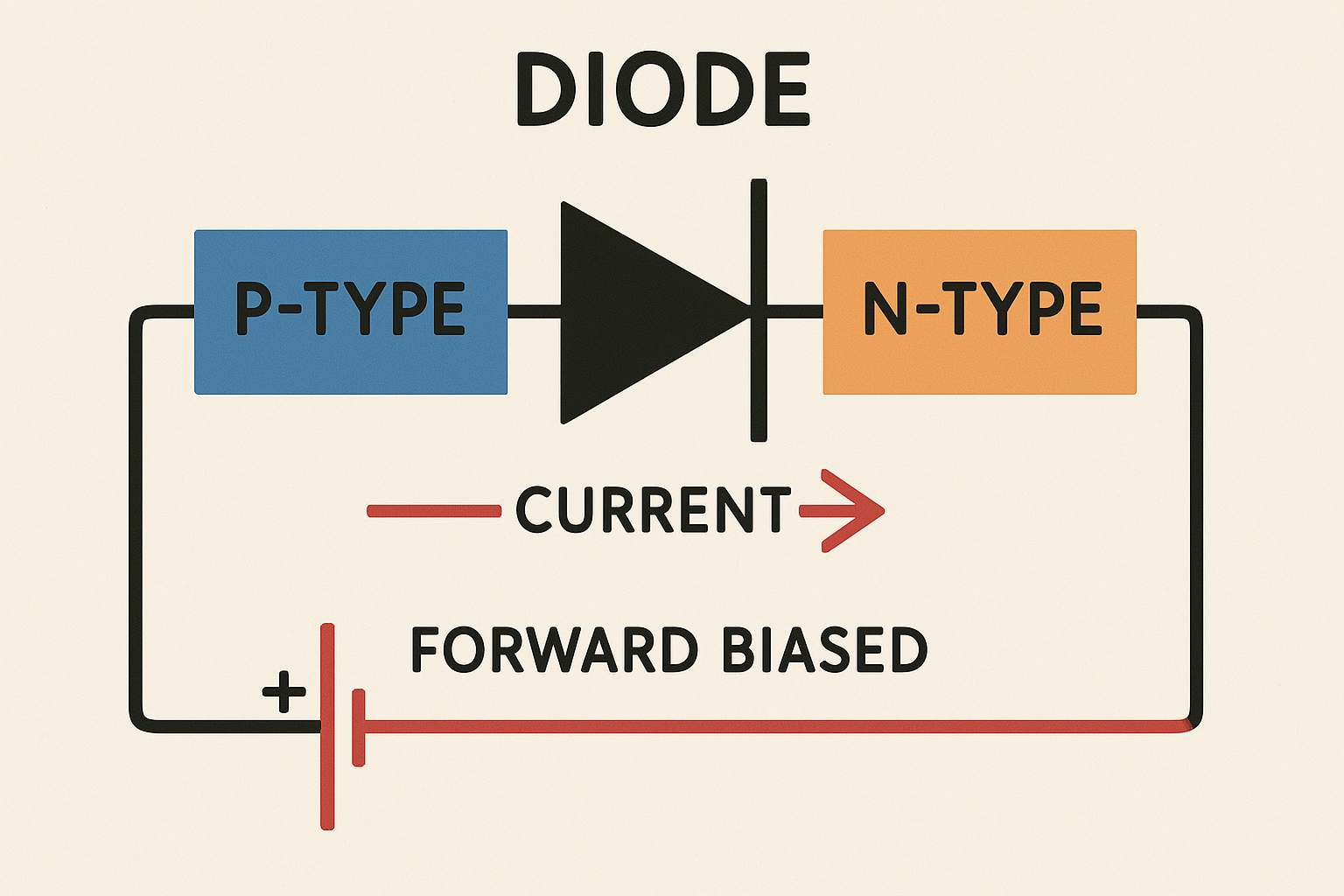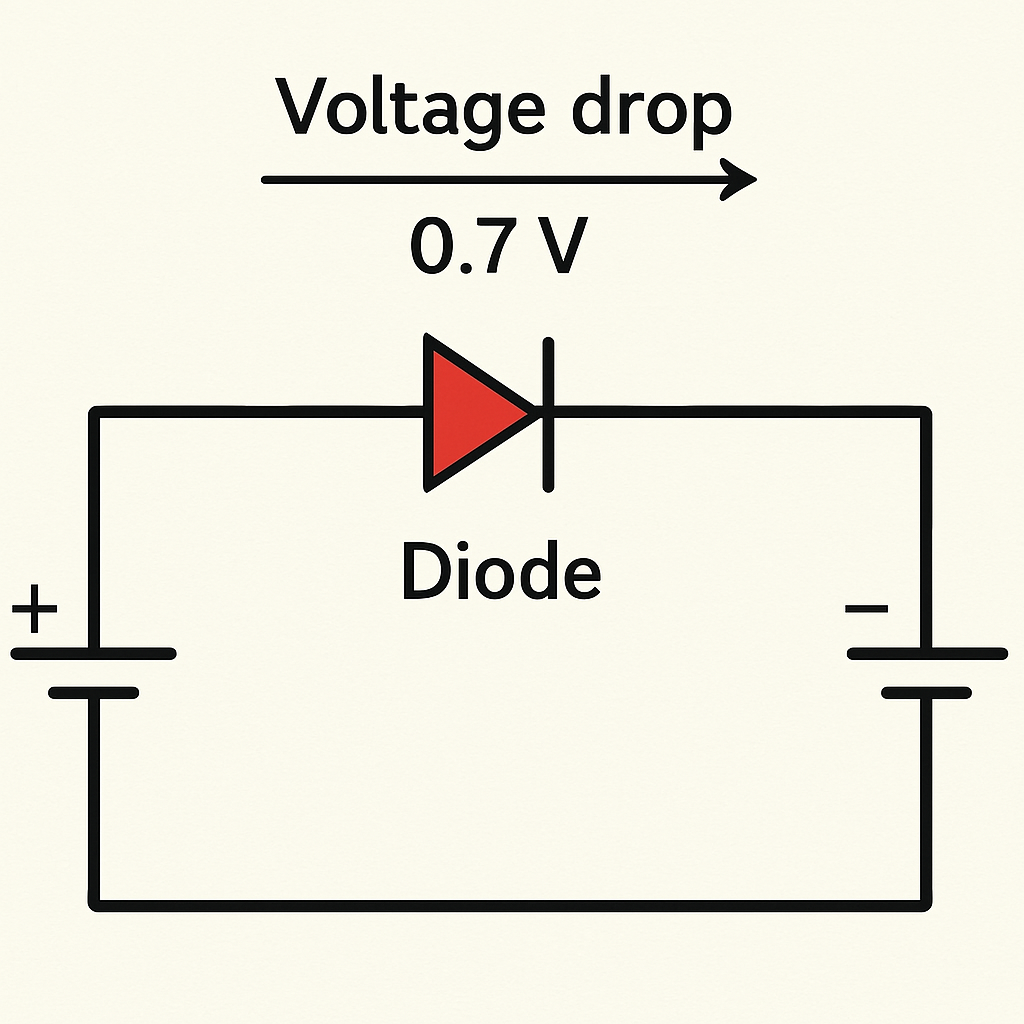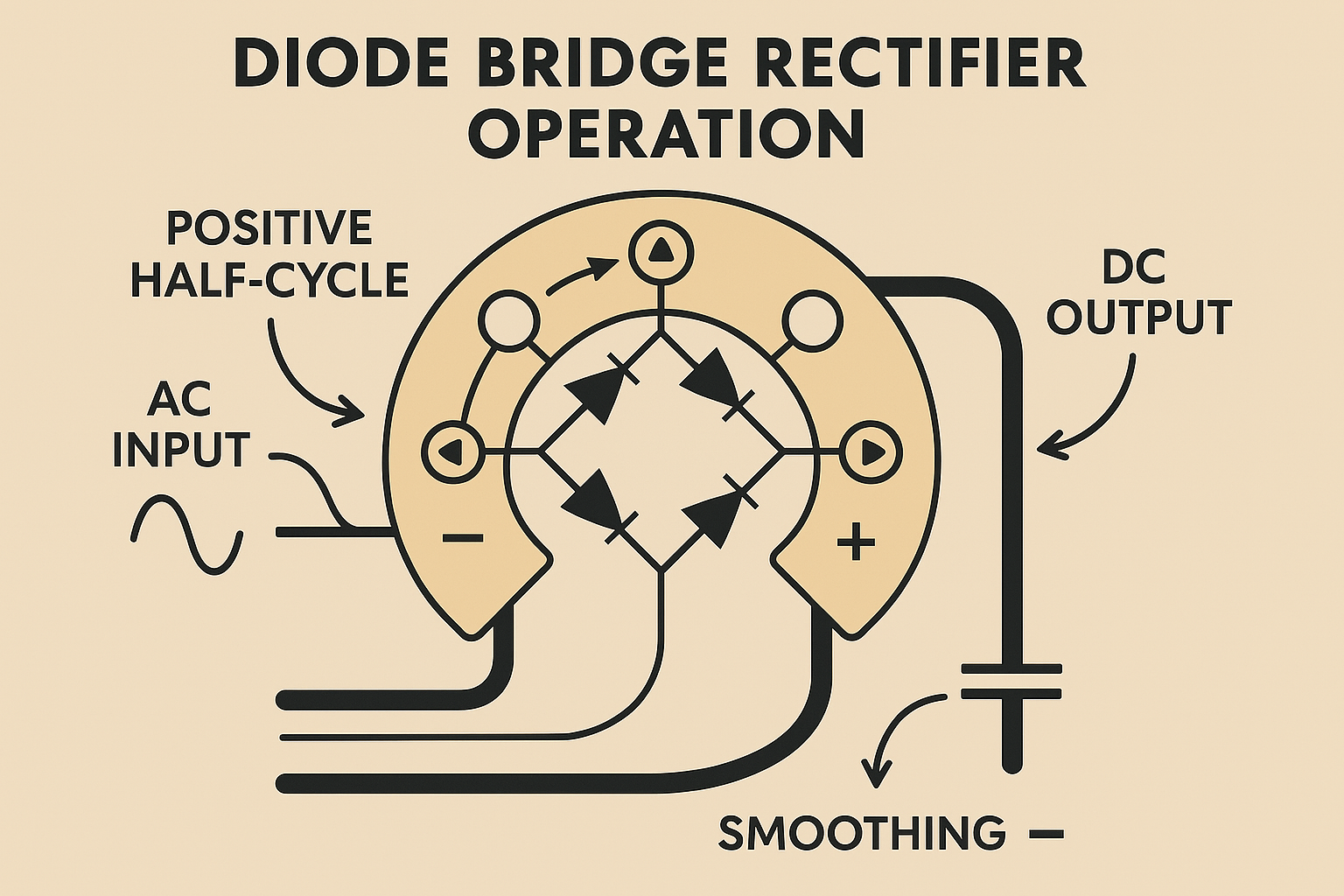Marine Electrical Courses Online Diodes
Marine Electrical Courses Online Diodes are critical components. Within this module diodes and rectifiers are important devices in battery charging, in solar panels and much more. When used in battery charge current distribution systems they do have deficiencies that include heat generation and voltage drop.
In electric charging systems they are the core part of an alternator that converts or rectifies the AC voltage to DC required to charge a battery. The control of the alternator also has a voltage regulator that may be a single chip voltage regulator device. An alternator may also have additional diodes for excitation circuits.

Marine Electrical Courses Online Diodes
To advance diode theory a little more and recap as we explain this more. The p-n junction consists of two semiconductor regions of opposite doping type, that is P and N. Where they meet is called the PN junction. At this junction, some electrons from the N type material move into some of the holes in the P type region. This region acts as a barrier and is called the depletion region. This depletion region is very thin, and responds very rapidly to changes in voltage, and it is here that current is either blocked or allowed to pass. When a diode is connected and the N type material is connected to negative polarity, and p type to positive, the excess electrons within the N type material are repelled, and the P type charged holes are also repelled. This results in a concentration of electrons in the depletion region. When the voltage exceeds approximately 0.5 to 0.7 volts electrons within the N type material will move across the depletion region at the junction, to fill holes in the P type material, and leaving holes within the N type material. When this happens, the diode is conducting and is said to be forward biased. If the polarities are reversed the device will block current flow and is said to be reverse biased. These junctions have a rectifying characteristic and are called p-n diodes. The p-n junction is used as a rectifier, as an isolation structure and as a voltage-dependent capacitor. They can also be used as solar cells, photodiodes, light emitting diodes and laser diodes. The junctions are also an essential component of Metal-Oxide-Silicon Field-Effects-Transistors (MOSFETs) and Bipolar Junction Transistors (BJTs) and we will touch on those later.
Marine Electrical Courses Online Diodes
When the power supply such as the battery allows current flow through the diode, the diode is said to be forward-biased. When the battery polarity is reversed and the diode blocks current, the diode is said to be reverse-biased. A diode is a switch or non-return valve. It is "closed" when forward-biased and "open" when reverse-biased. The direction of the diode symbol arrow points against the direction of electron flow. This is because the diode symbol uses conventional flow notation in schematics. This shows current as a flow of charge from the positive (+) side of the voltage source to the negative (-). This convention is used for all semiconductor symbols possessing arrows. Like check valves, diodes are essentially "pressure-" operated (voltage-operated) devices. The essential difference between forward-bias and reverse-bias is the polarity of the voltage dropped across the diode. A diode has an inherent voltage drop of typically 0.7V to 0.8V. This is unacceptable in a normal charging circuit
Marine Electrical Courses Online Diodes
The most common diode application on your boat is the bridge rectifier within the alternator. A diode bridge rectifier is a circuit designed to convert alternating current (AC) into direct current (DC). It consists of four diodes arranged in a bridge configuration, and it's commonly used in vehicle alternators and other power supply applications. The diode bridge ensures that regardless of the AC polarity, the output maintains a consistent DC voltage
- AC Input: The circuit receives AC voltage from a power source—such as an alternator in a vehicle.
- Diode Arrangement: The four diodes are positioned in such a way that they direct current flow correctly.
- Positive Half-Cycle: During the first half of the AC cycle, two of the diodes conduct, allowing current to flow in one direction.
- Negative Half-Cycle: In the second half of the AC cycle, the other two diodes conduct, maintaining the current flow in the same direction.
- DC Output: As the diodes prevent current from reversing, the output remains as a pulsating DC voltage.
- Smoothing: A capacitor is often added to further stabilize the DC output by reducing fluctuations.
Marine Electrical Courses Online Diodes
Rectifiers are essential in any system that requires DC power from an AC source, such as alternators, wind and water generators, power adapters, and industrial equipment. Their ability to provide a steady DC voltage makes them a fundamental component in electrical and electronic circuits. Rectifiers are unique because they serve a specific function: converting alternating current (AC) into direct current (DC). Here’s how they differ from other common electronic components:
1. Rectifiers vs. Diodes. Rectifiers use diodes in a specific arrangement to convert AC to DC. Diodes themselves are individual semiconductor devices that allow current to flow in one direction, but they aren’t necessarily configured for rectification.
2. Rectifiers vs. Transistors. Rectifiers control current flow in one direction to produce a stable DC output. Transistors are active components that amplify or switch electrical signals, playing a key role in digital circuits and signal processing.
3. Rectifiers vs. Capacitors. Rectifiers deal with current conversion. Capacitors store and release electrical energy and are often used in conjunction with rectifiers to smooth voltage fluctuations.
4. Rectifiers vs. Voltage Regulators. Rectifiers generate a DC voltage but may have variations in output. Voltage regulators refine the DC output to provide a consistent voltage level for stable operation.
Marine Electrical Courses Online Diodes Theory
To overcome voltage drops within diode isolators and charge distributors there have been newer technology diodes. The Victron ARGO Diode unit incorporates Schottky diodes which have a much lower voltage drop. Typically this is 0.3 volts and at rated output around 0.45 volts. When the required forward voltage is applied, a current then flows in the forward direction. The typical silicon p-n diode has a typical forward voltage in the range of 600–700 mV, and the Schottky diode forward voltage is in the range150–450 mV.
They do incorporate a compensation diode to increase voltage output to compensate for this. Schottky diodes are metal semiconductor junction diodes with a fast-switching characteristic and sometimes known as hot carrier diodes or Schottky barrier diodes. Marine Electrical Courses Online Diodes.


